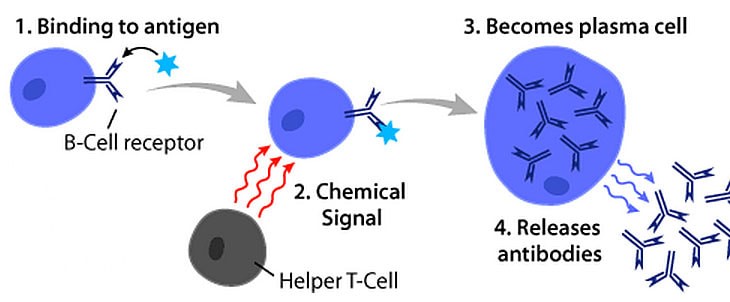Which of the following types of cells produce and release antibodies?
A. Natural killer cells
B. Cytotoxic T-cells
C. Plasma B cells
D. Helper T-cells
Plasma B cells.
Antibodies are produced by specialized white blood cells called B lymphocytes (or B cells).
When an antigen binds to the B-cell surface, it stimulates the B cell to divide and mature into a group of identical cells called a clone.
The mature B cells, called plasma cells, secrete millions of antibodies into the bloodstream and lymphatic system.

Choice A, Natural killer cells, is not the correct answer because natural killer cells are a type of white blood cell that play a major role in the host-rejection of both tumors and virally infected cells.
Choice B, Cytotoxic T-cells, is not the correct answer because cytotoxic T-cells are a type of white blood cell that kills cancer cells, cells that are infected (particularly with viruses), or cells that are damaged in other ways.
Choice D, Helper T-cells, is not the correct answer because helper T-cells are a type of white blood cell that play an important role in the immune system by helping other white blood cells fight infections.
Therefore, the Correct Answer is C.


